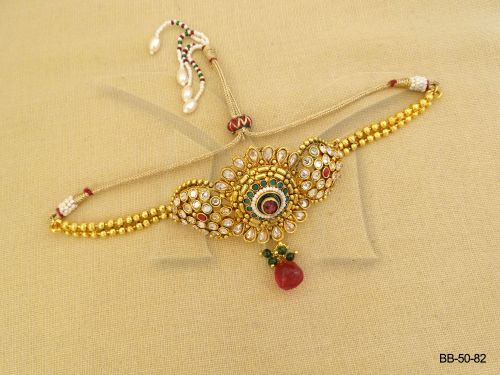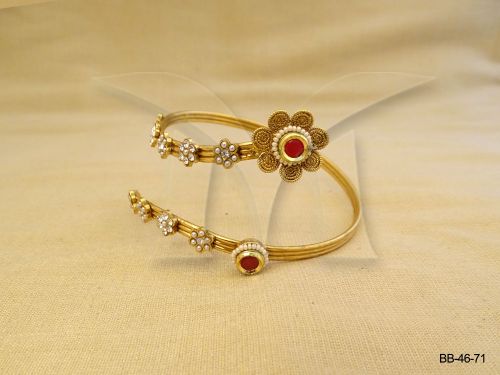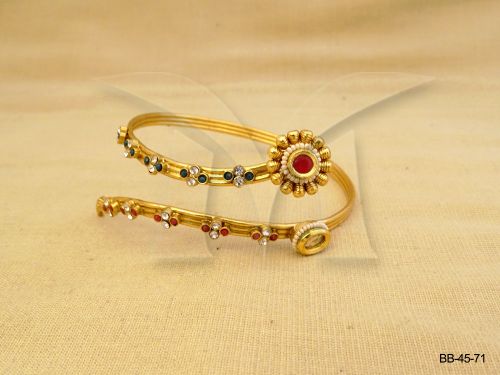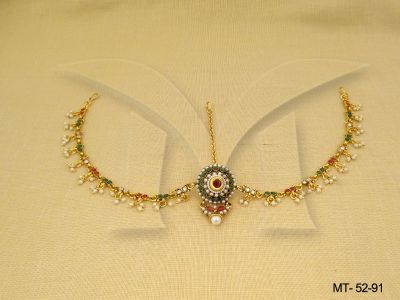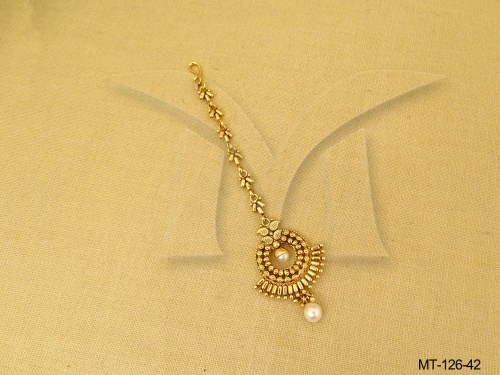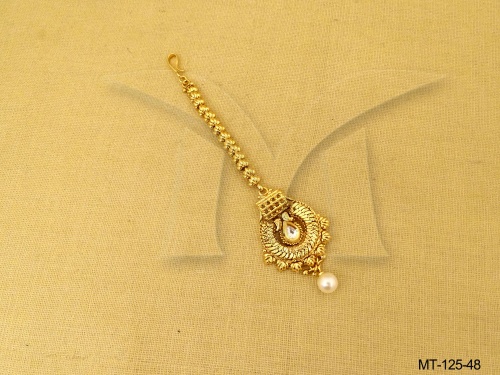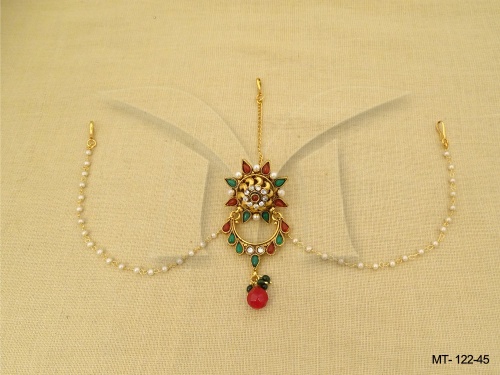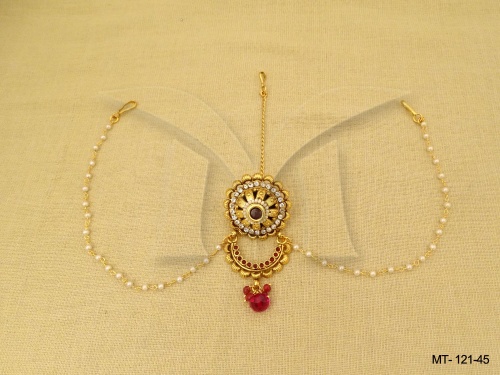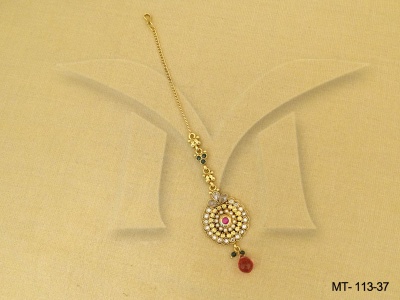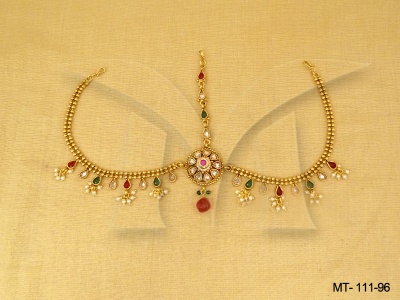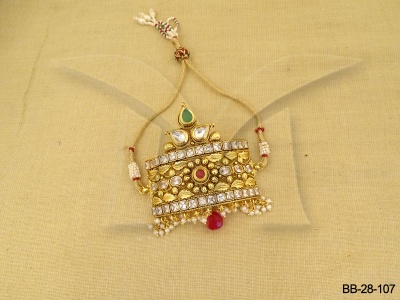Antique Jewellery Bangles Set
Antique Jewellery Bangles Set , also known as Bikaneri or Jaipuri jewellery, is a popular variation, wherein enameling with vivid colours and designs is on the reverse, while the Antique setting is in the front. The city of Jaipur in Rajasthan has traditionally been the centre for Antique jewellery in India.
Manekratna the styles of all the latest trends in jewellery, bringing it online for all the jewel lovers now in India. Our emporium provides the latest trends in Fashion Jewellery to bring more versatility to your wardrobe thereby making it perfect for both the conventional and the contemporary women. We offer exclusive Artificial and Imitation Jewellery designs online at best prices. From classy sophisticated Jewellery pieces to traditional and antique collections, we specialize in every genre of jewelry design bringing the joy of jewellery fashion at your doorstep.
Antique Jewellery Bangles Set is a traditional form of Indian gemstone jewellery involving a gem set with gold foil between the stones and its mount, usually for elaborate Bangles Sets. The method is believed to have originated in the royal courts of Rajasthan and Gujarat. It is one of the older forms of jewellery made and worn in India. The word Antique means highly refined gold, and a highly refined and pure form of molten gold is used.
It remains an integral part of the traditional bridal wedding trousseau. Traditional settings, including the thappa and ras rawa, are experiencing a revival. Most recently, in the 2008 epic film, Jodhaa Akbar, the lead character portrayed by Aishwariya Rai was extensively shown wearing Antique jewellery, highlighting its influence among Rajasthani royalty.
Antique flourished under royal patronage during the Mughal era. Over the years, the Antique jewellery of the courts was successfully copied in silver in Rajasthan, Bihar and the Punjab and became popular with the common man.
Antique jewellery is created by setting carefully shaped, uncut diamonds and polished multicoloured gemstones into an exquisitely designed pure gold or faux metal base. The elaborate process begins with the skeletal framework called Ghaat. Thereafter, the Paadh procedure takes place, during which wax is poured onto the framework and moulded according to the design. Following this is the Khudai process, when the stones or uncut gems are fit into the framework. Meenakari then involves enameling to define the design details. Next, the Pakai process involves gold foils that hold the gems onto the framework; these are cold soldered using burnishing techniques. Finally, the gems are polished using the Chillai process.





